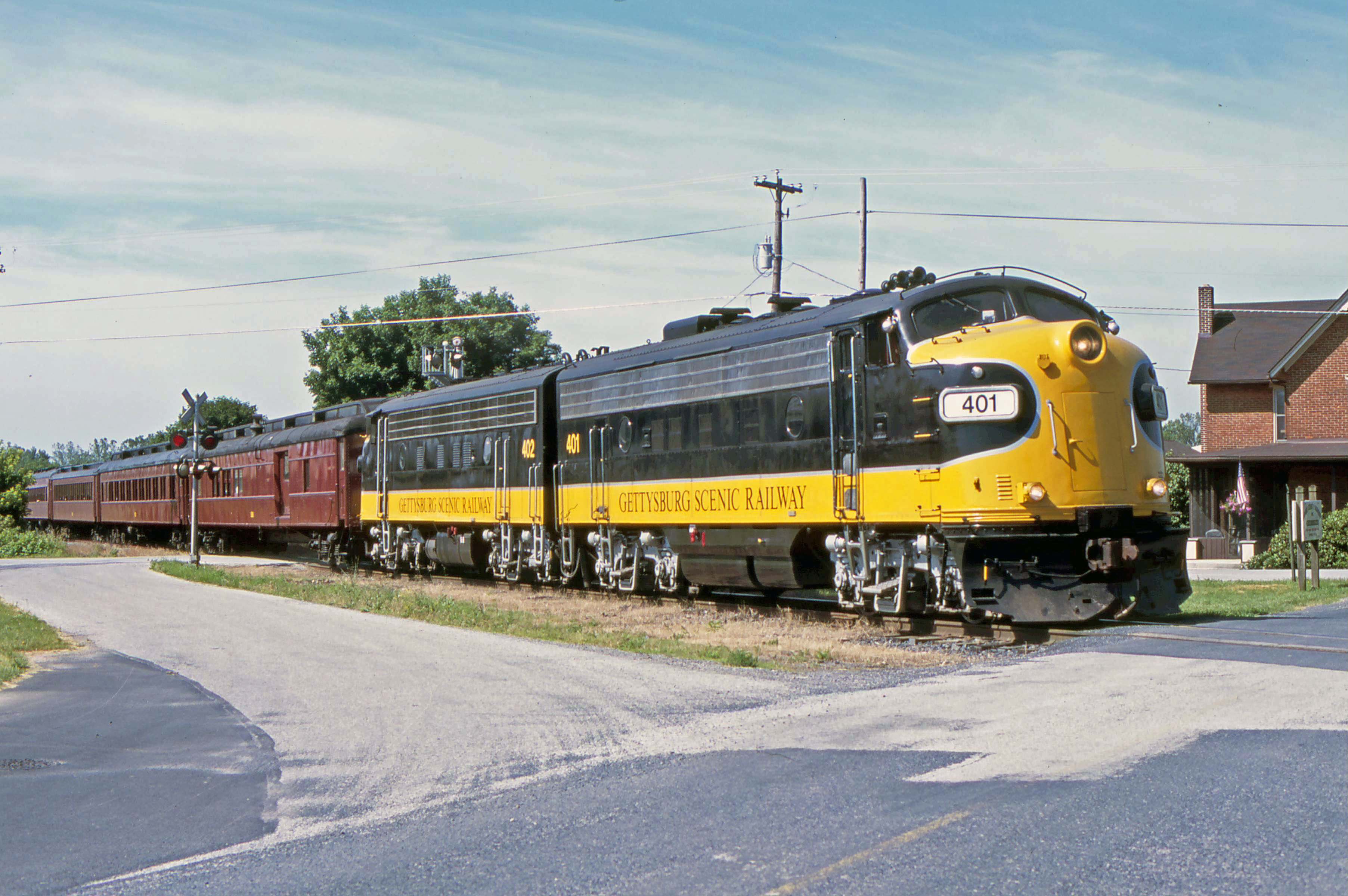F-Unit Gallery
|
| Chicago & North Western Commuter F's
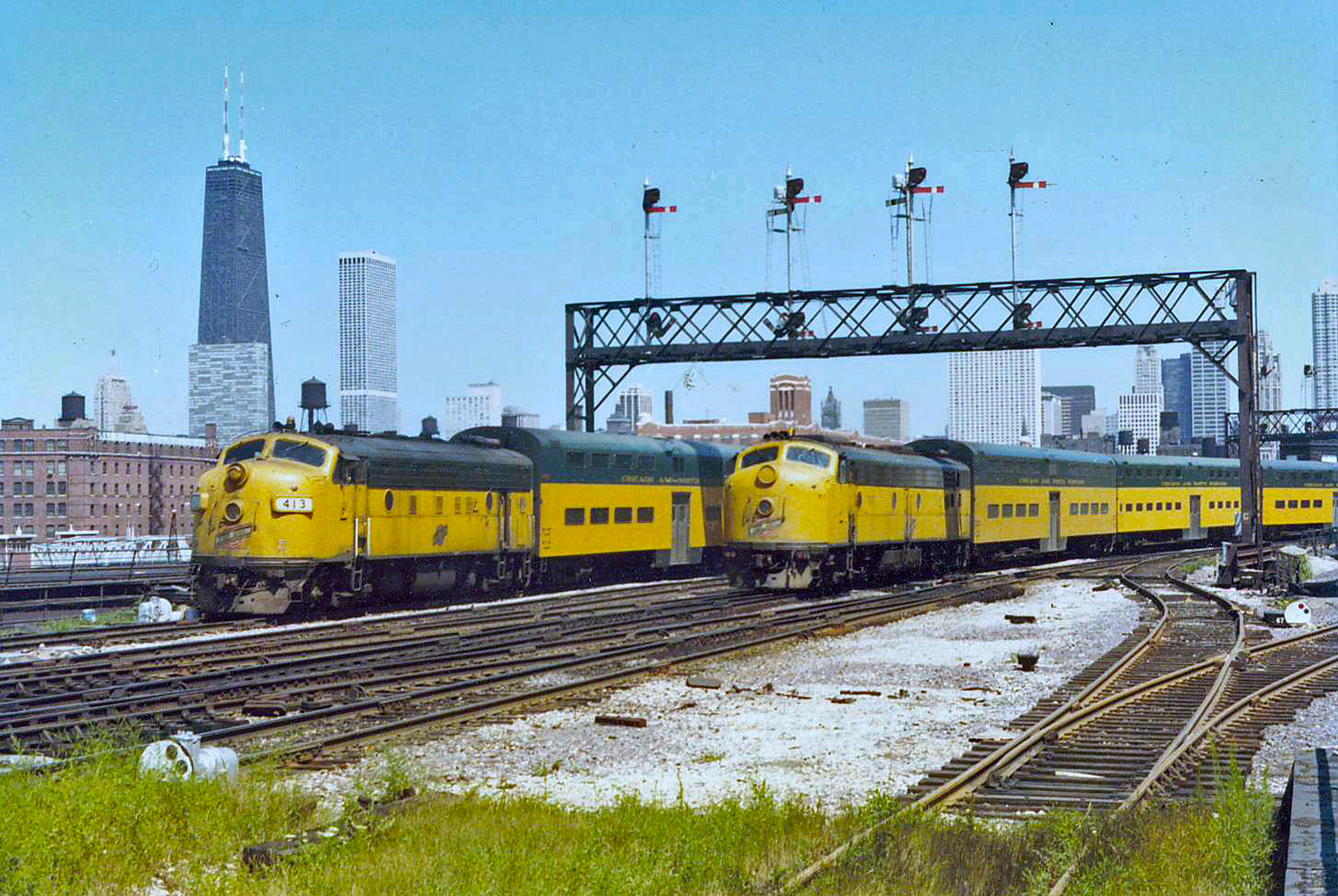
A pair of Chicago and North Western Transportation Company commuter trains duck under a
vintage signal bridge laden with upper quadrant semaphores in August 1978. This location
is at the western entrance to the CNW passenger terminal in downtown Chicago. On the left
is an inbound train in the push mode powered by F7 No, 413; on the right is an outbound
train powered by E8 No. 8025B. |
Rock Island Freight Unit
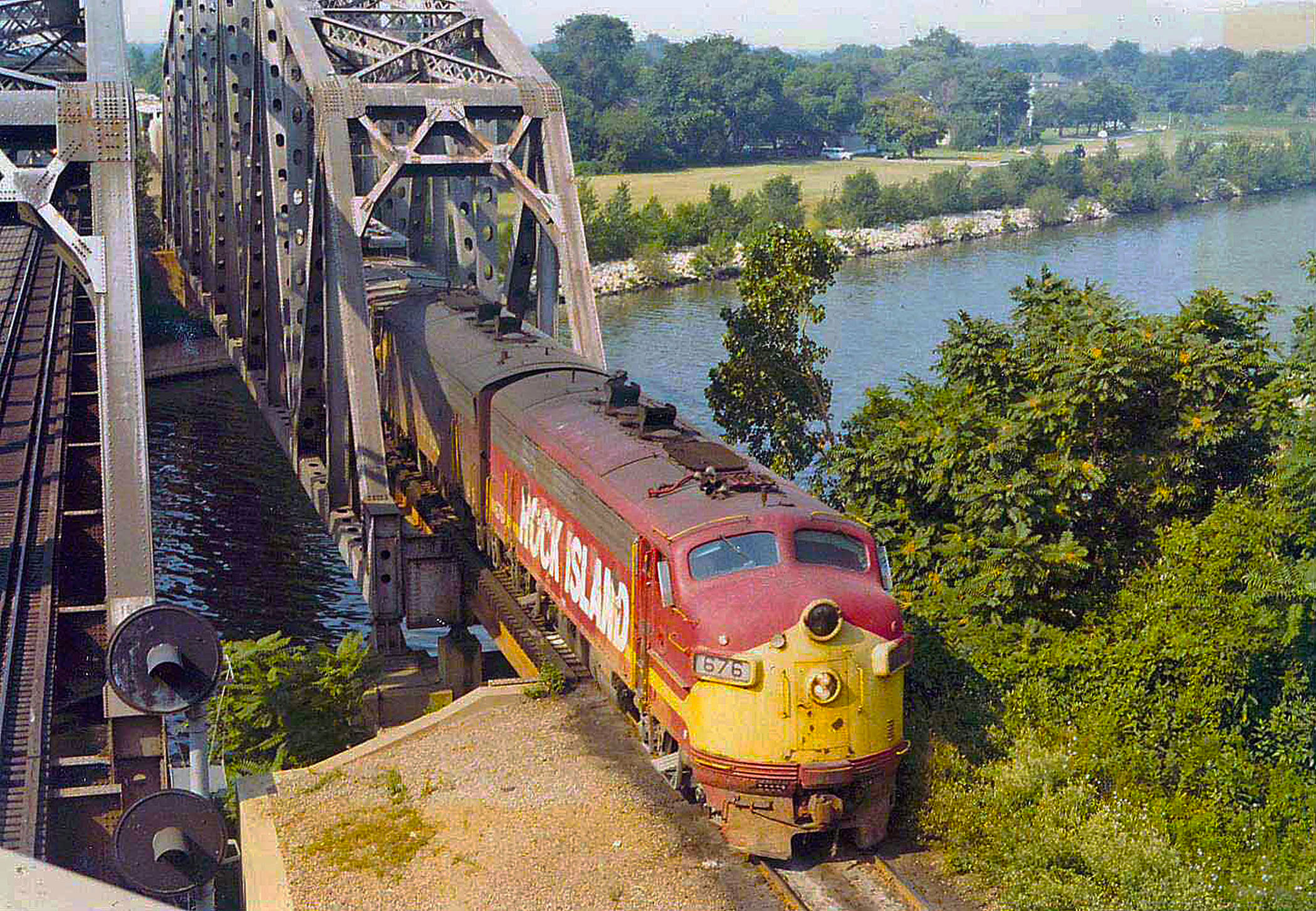
A Rock Island grain train crosses over Calumet Sag Channel in Blue Island, Illinois in
August 1978. A pair of EMD F7s power the 88-car train. |
| Canadian National Passenger F-units
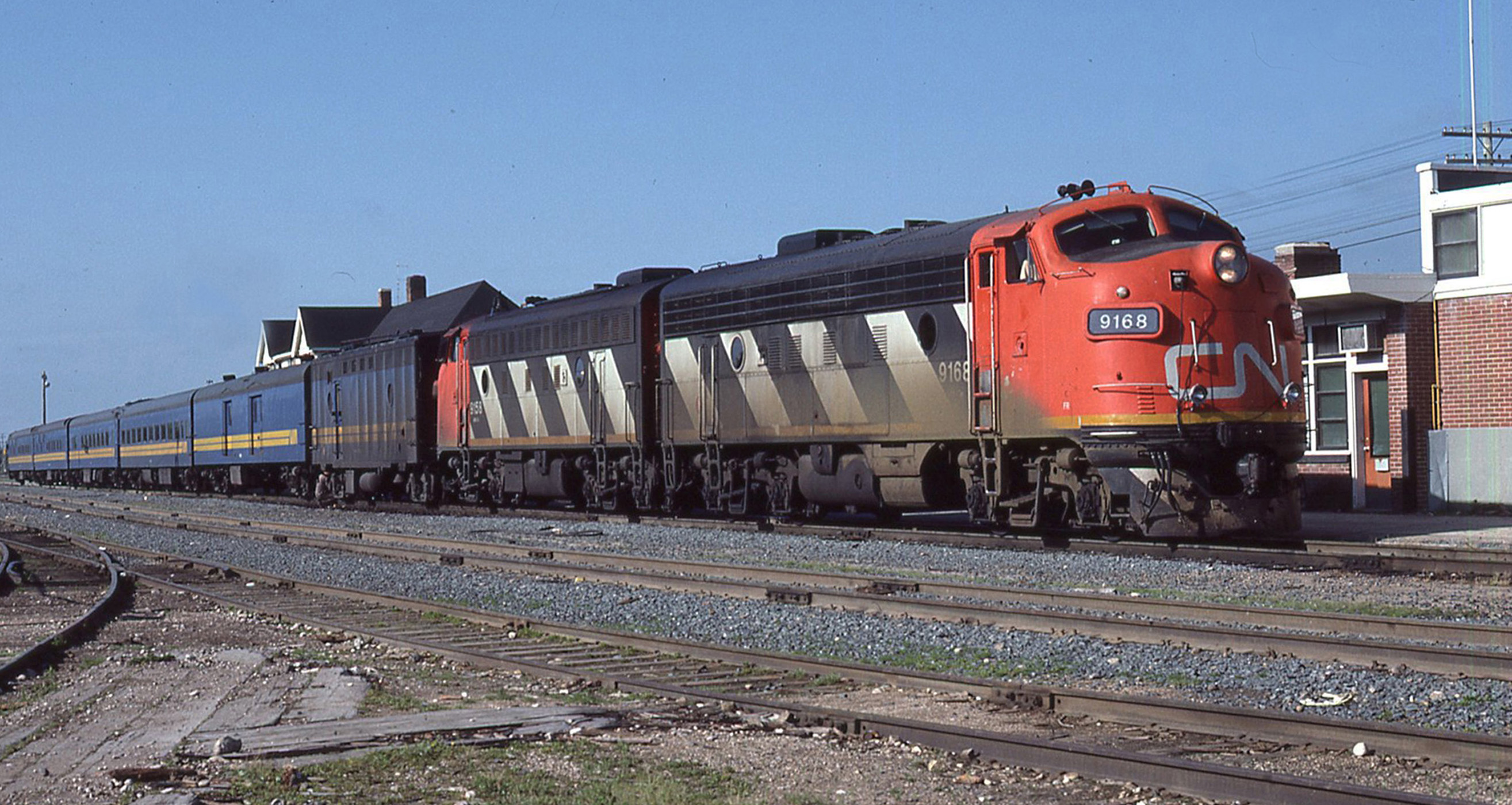
Our train stopped at The Pas station on July 1, 1985. The power for our train was Canadian
National freight GMD F7s Nos. 9168 and 9158. Since Via Rail was eight years old by then we
were surprised to see GMD F7s still in CN paint. Coupled behind the 9158 is a Via Rail
head-end power car equipped with a diesel/generator to provide electricity for the consist.
|
An Alternate Form of B-unit
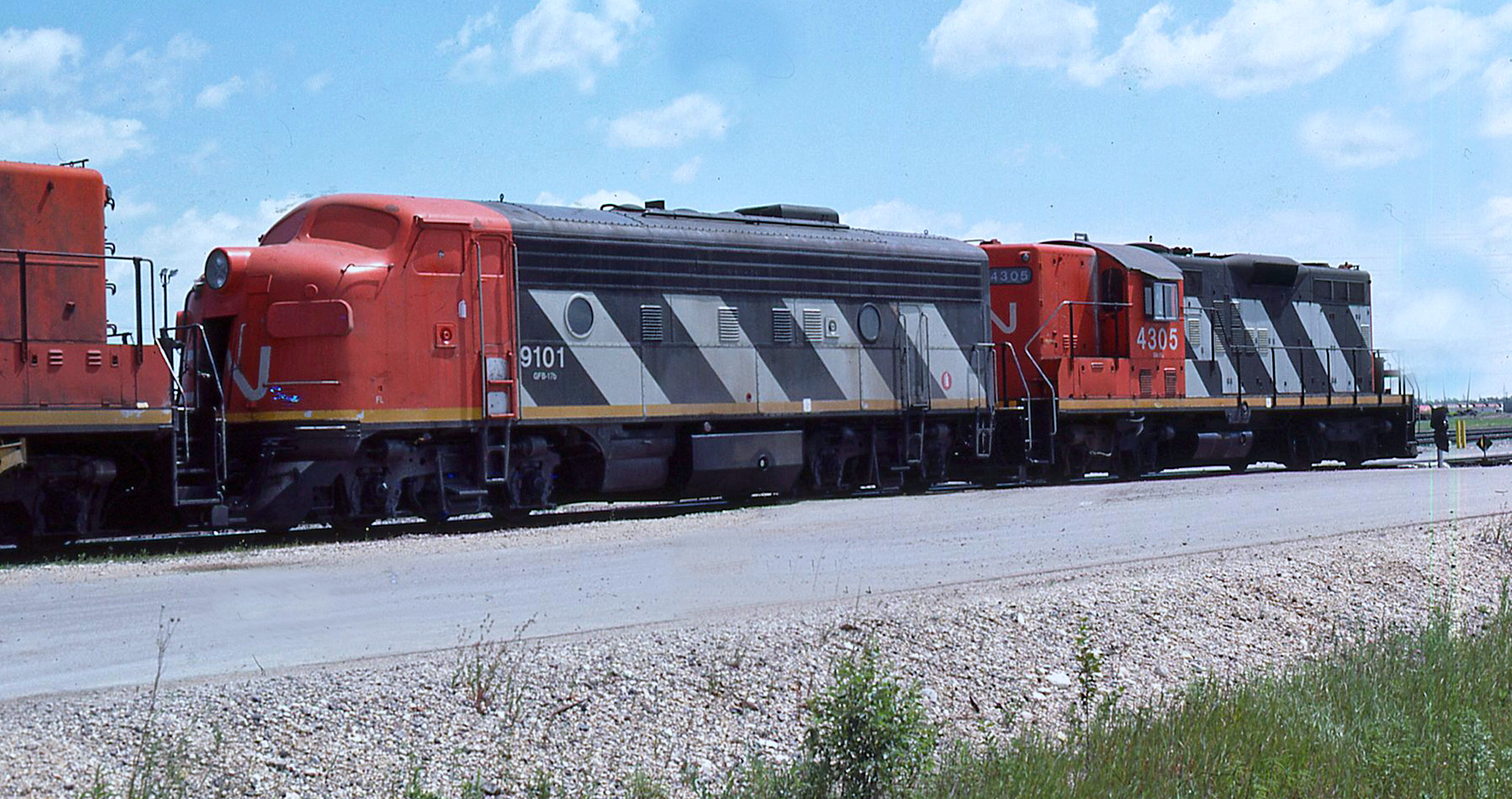
While exploring around the Canadian National freight yard in Winnipeg, Manitoba on July 4
1985 I came across this former CN F7 which had been converted to a B-unit. Its cab had
been stripped of all appliances and controls, and the windows covered. It was coupled
between two GMD GP9s, so the lashup was kind of a bizarre A-B-A consist! |
| SOO 2500A, Ex-EMD FP7 Demo
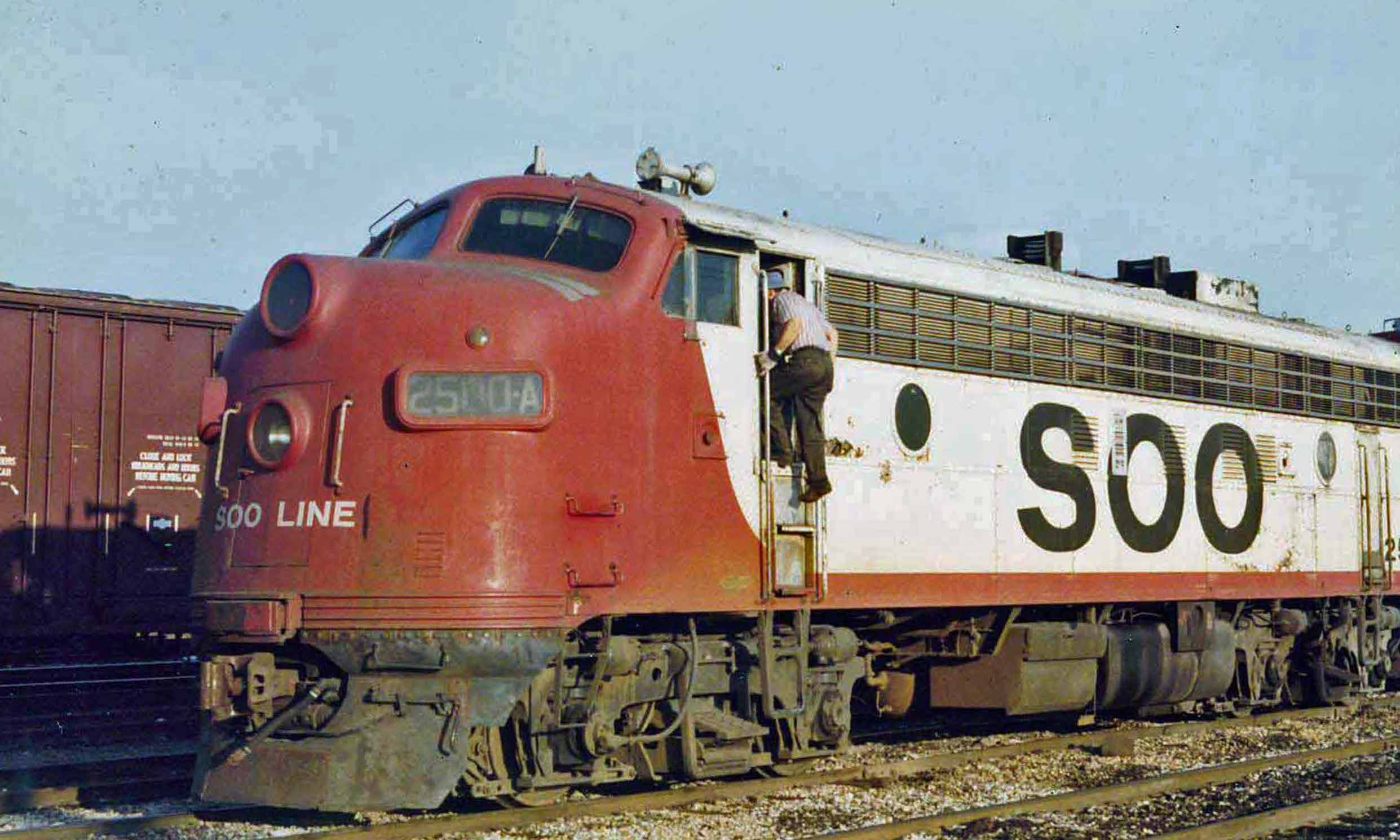
A hostler in Soo Line's Schiller Park Yard prepares to move EMD FP7 No. 2500A in August 1978.
Schiller Park Yard was the southern terminus of the Soo Line Railroad, located in Des Plaines,
IL. It consisted of six arrival tracks, 15 classifications tracks, an engine terminal with
roundhouse, two caboose tracks, four team tracks, two freight house tracks, nine R.I.P.
tracks, a scale track, a clean-out track, two TOFC tracks and nine local industries.
Canadian Pacific now owns the Soo Line. FP7 No. 2500A was one of several such passenger
engines used by the Soo Line for their passenger service between Chicago, Duluth, Winnipeg
and other places. It is currently owned by the Lake Superior Railroad Museum and is used
in excursion service. |
F-UNITS ON THE PRAIRIE
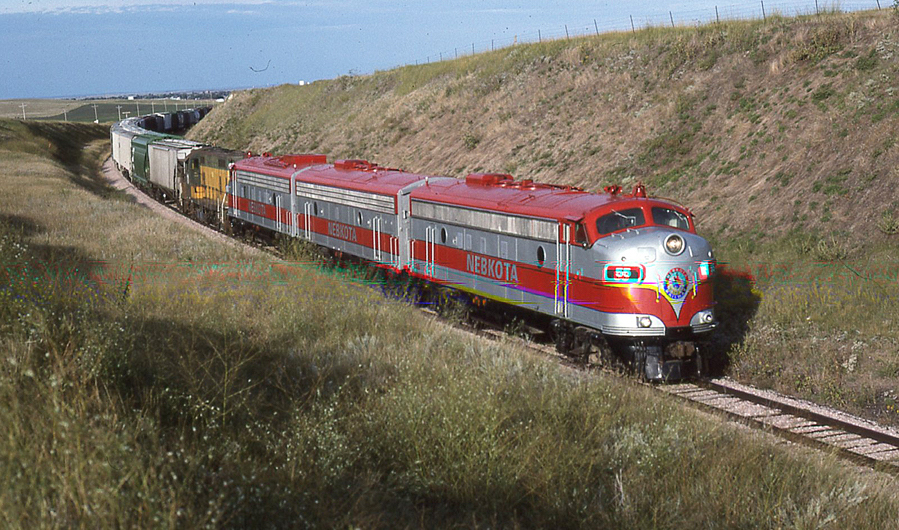
One of the most intriguing developments for many railfans in the early 1990s was the
creation of the Nebkota Railway; it ran between Chadron and Merriman, 74 miles, on the
Chicago and North Western's Cowboy Line. What made this new operation so intriguing is
that their trains were powered by a classic set of F-units painted in a striking silver
and red scheme, which was a real treat for first-generation diesel fans. The three covered
wagons were acquired from VIA Rail in Canada. Due to the loss of grain traffic the railway
was forced to abandon portions of its line, and later the operation was sold to another
railroad, ending the runs with the Fs. In this photo, taken in September 1996, a Nebkota
train heads east near Gordon, Nebraska. Leading the train is FP7 No. 55, originally
Canadian Pacific No. 4099; trailing is F9B No. 66, originally Canadian National No. 6612;
and the third diesel is FP9 No. 54, originally Canadian National No. 6451. |
| Tourist Line F-Unit
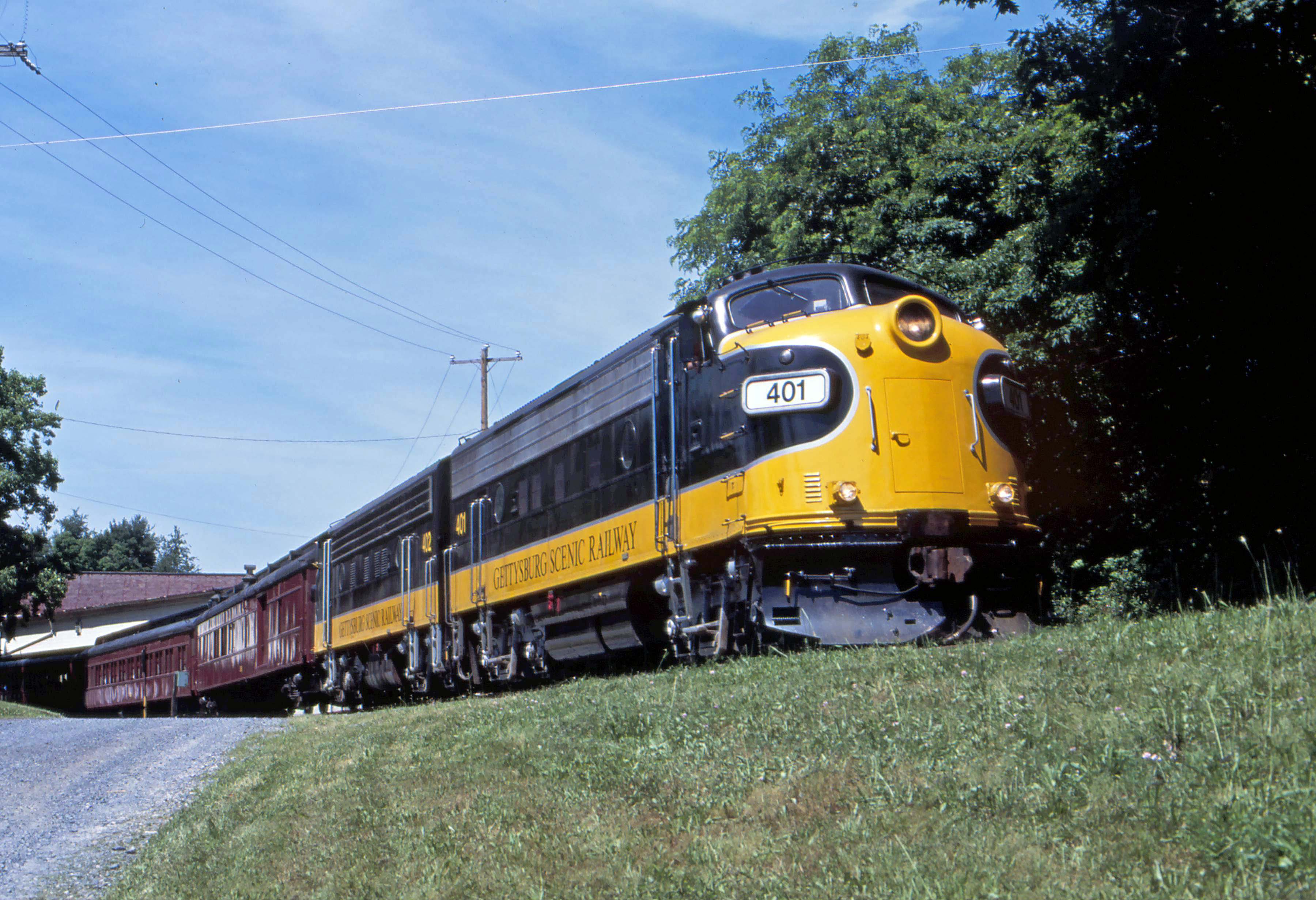
Gettysburg Scenic Railroad, prior to Pioneer Lines ownership, used F-units in both freight
and tourist train service. This photo shows GSR #401 (ex-Erie LTV Miming) and 402 (ex-Chicago
& North Westerm 4086) leading an afternoon excursion.
|
Dual Power Commuter F-Unit
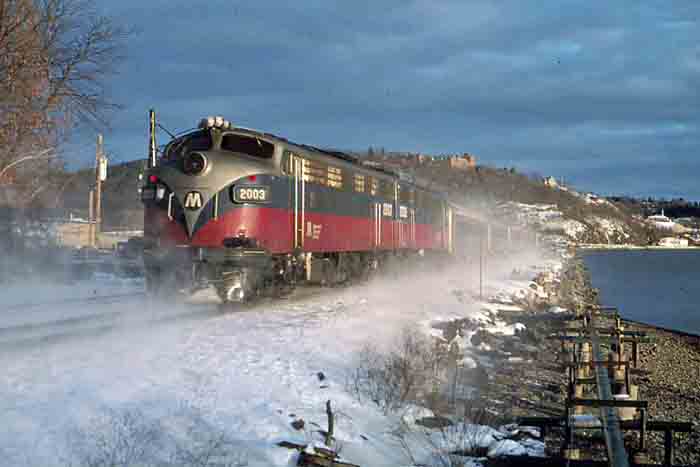
A pair of EMD-built FL9s lead an early evening commuter train along the eastern shore of the
Hudson River. Built in October 1957, the leader was ex-New Haven #2017; it later carried the
colors of Penn Central #5017 and Conrail #5017.
|
| Museum F-Units On The Main
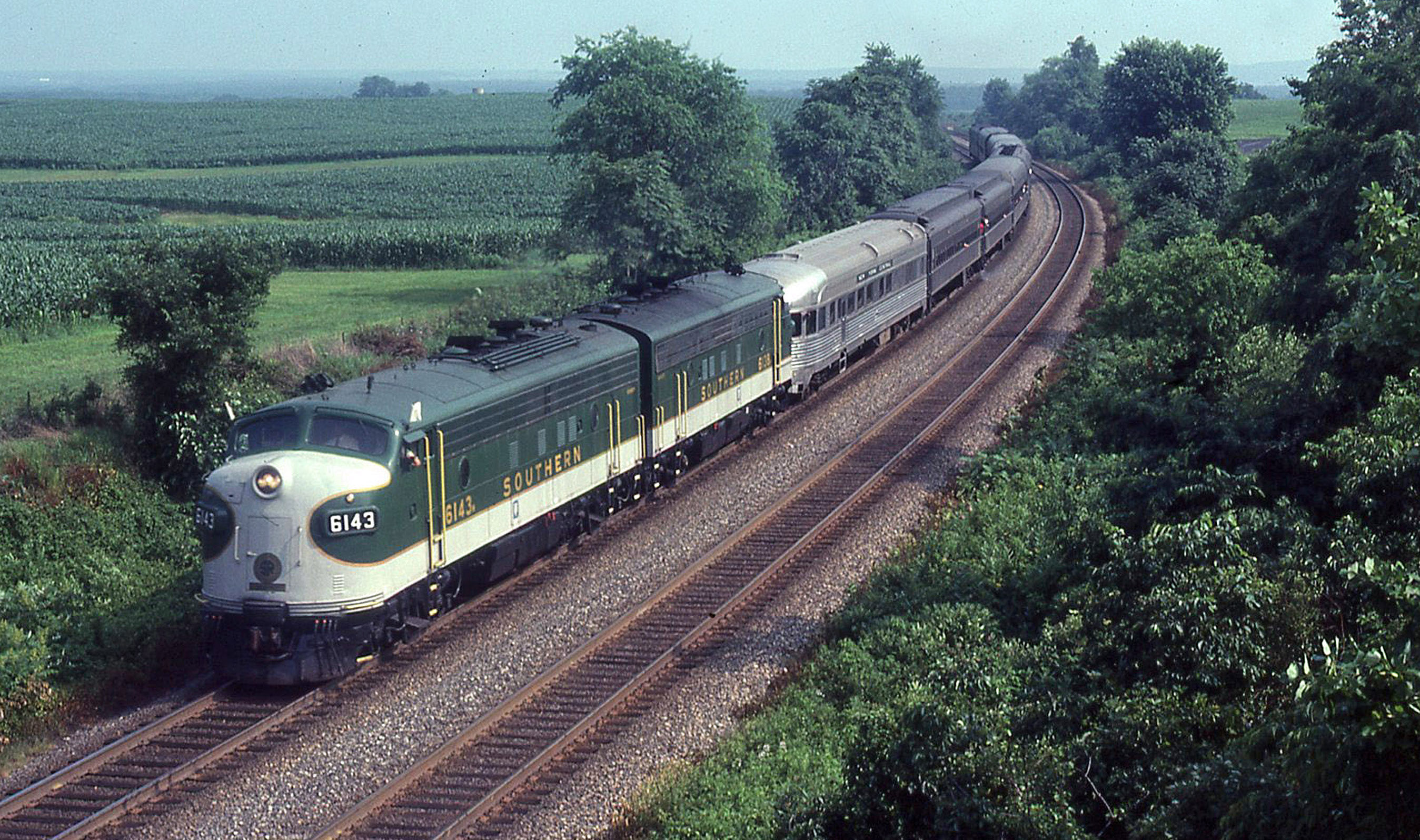
Southern Railway FP7s No. 6143 and 6133 lead an excursion train north bound on the Southern
main at Culpeper, VA on June 20, 1981. This train, titled The Piedmont Limited , is on the
return leg of an Alexandria-Charlottesville VA round trip. The excursion was sponsored by
the Potomac and Washington DC Chapters NRHS, and the Chesapeake Division of the Railroad
Enthusiasts, known as the Joint Trip Committee. |
Short Line F-Unit
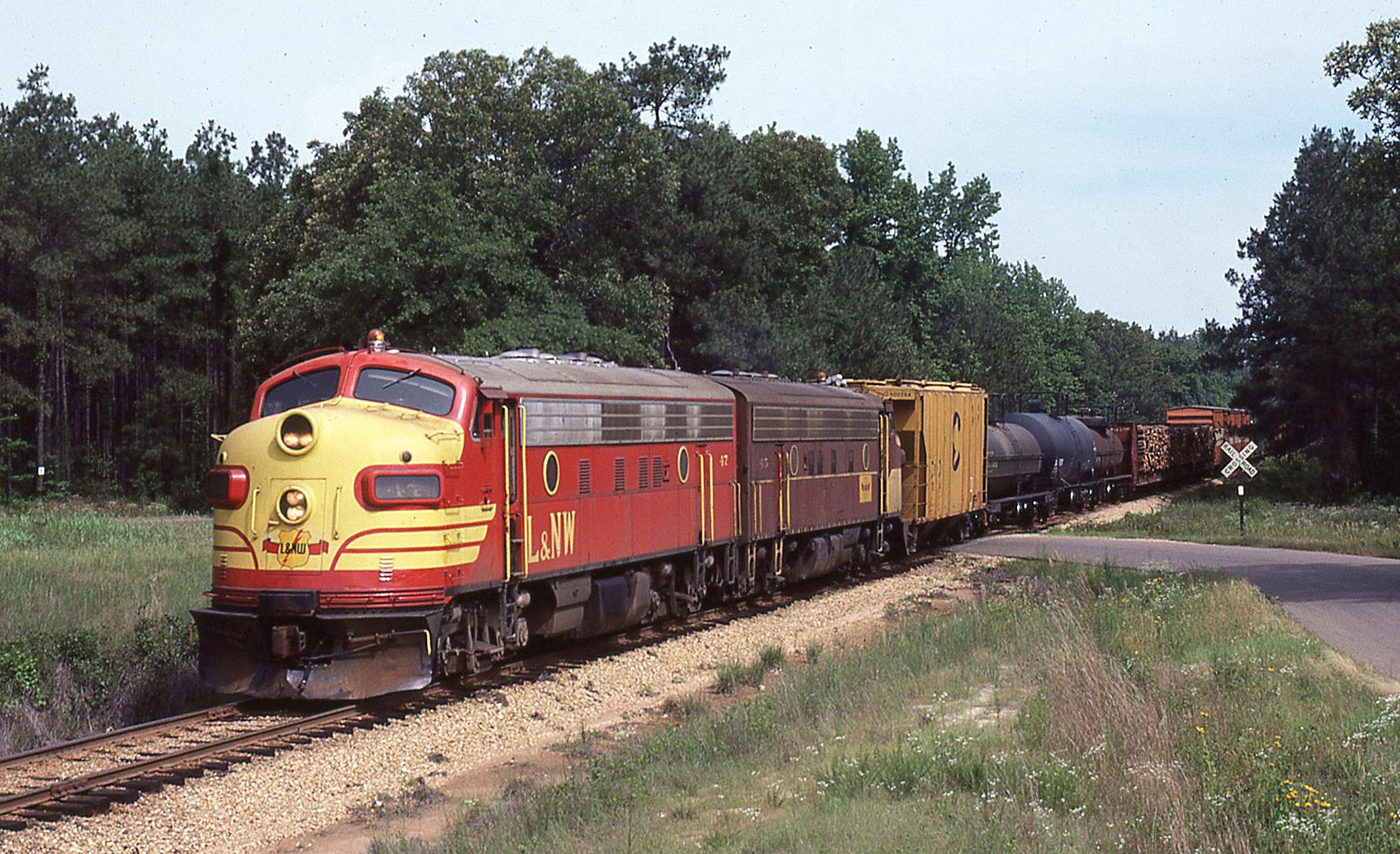
For most of the 1980s railfans were drawn to the Louisiana and North West Railroad, a 62-mile
shortline running between McNeil, Arkansas and Homer, Louisiana. The attraction was the L&NW
fleet of 30 year old EMD F7s hauling freight, which were becoming uncommon to see on most
railroads by then. In 1986 the L&W had five F7s and one FP7 on their roster, however the
F-units were gone by the early 1990s, replaced by EMD Geeps. This photo was taken of a south
bound L&NW local at Brister, Arkansas on June 7, 1984. Leading the 27 car train are F7s No.
47 and 45, both ex-Southern Pacific units |
